In The News
Find your care
Our interventional neuroradiology team has paved the way for interventional procedures, creating several of the devices and techniques widely used today. Call 310-267-8761 to learn more about our services.
News/Events
UCLA Interventional Neuroradiology provides cutting edge diagnosis and treatments, and supports a staff of renowned physicians, surgeons and researchers.
Patient Success Stories
World Stroke Thrombectomy Day being designated to May 15th #WTD
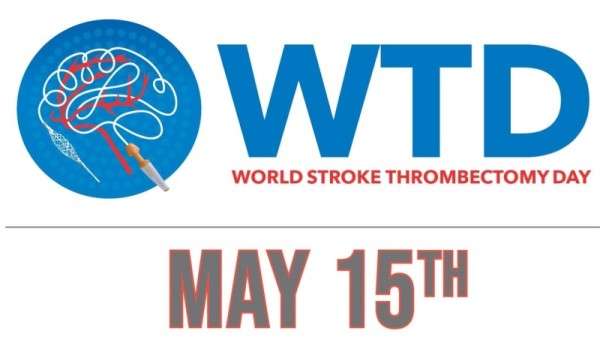
ePRNews reported on the announcement from The Society of Vascular and Interventional Neurology (SVIN) Mission Thrombectomy 2020+ Initiative (MT2020+) designating May 15th as World Stroke Thrombectomy Day. Minimally invasive emergency thrombectomy surgery is a recently established first line treatment for severe stroke due to large artery blockage in the brain.
Viktor Szeder, MD, PhD, associate professor of radiology and neurosurgery, serves on the core executive committee of MT2020+.
UCLA Interventional Neuroradiology is known as pioneer in the field of stroke thrombectomy. Invention of MERCI Retriever, the first device approved in the United States for mechanical thrombectomy - to remove blood clots in patients suffering from acute stroke was developed and tested at the UCLA Rigler Radiology Research Center by the lead inventor and our division’s previous clinical faculty, Professor Y. Pierre Gobin. In the FDA approval clinical study, UCLA Interventional Neuroradiology with a collaborative effort with UCLA Emergency Neurology and Stroke Neurology played a significant role.
Click here to see the video of the stroke experts from around the world supporting #WTD
Drs. Viktor Szeder and Gary Duckwiler were invited to co-author recently published international textbook “CHAPTERS OF INTERVENTIONAL NEURORADIOLOGY” by editors Drs. Csaba Oláh and István Lázár.
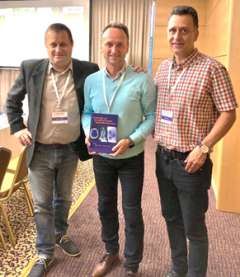
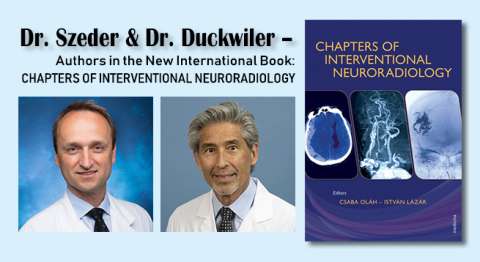
The book is intended for trainees and specialists involved in the care of neurovascular patients, patients undergoing NeuroInterventional procedures. Neurologists, neuroradiologists, neurosurgeons interested to review anatomy, physiology, neurointerventional techniques, neurovascular pathology, tools and kits used for the procedures will find up-to-date and concise chapters. The list of authors consists of experts from Europe and the US.
Dr. Szeder authored chapter on Cerebrovascular anatomy with multiple angiographic examples of normal and variant vasculature. Dr. Duckwiler wrote an afterword mentioning the giants of the field, who were UCLA faculty, as well as challenges and hopes for this field in the future.
Our UCLA Interventional Neuroradiology division had another very successful Society of Vascular and Interventional Neurology (SVIN) meeting participation.
SVIN had its 11th Annual Meeting, this year in San Diego, CA November 14-17 and our faculty members and fellows played very active role in the meeting.
In its award ceremony, SVIN recognized 2 members of our UCLA Comprehensive Stroke center. Dr. Fernando Viñuela from our division, who received the 2018 Interventional Pioneering Award and Dr. David Liebeskind (SVIN president-elect) from the UCLA Stroke Neurology, who received the 2018 Neurologist Pioneering Award. Congratulations!
Two our division’s faculty had invited lectures: Dr. Viktor Szeder in the Pseudo-live Cases session presented talk “Dural Arterio-Venous Fistula” and Dr. Satoshi Tateshima had a presentation “New Neck Bridging Devices” in the Brain Aneurysm session.
Our 2 fellows had poster presentation: Dr. Ashkan Mowla (fellowship class 2019) “Intracranial Angioplasty and Stenting in the Treatment of Acute Ischemic Stroke; UCLA Experience,” and Dr. Kasra Khatibi (class 2021) “Effect of Intra-Arterial Verapamil Treatment on Brain Tissue Oxygenation in the Setting of Cerebral Vasospasm.”
SVIN 2018 Pioneering Award Recipients
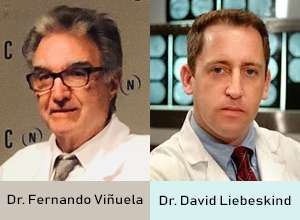
Dr. Fernando Viñuela received the Interventional Pioneering Award, and Dr. David Liebeskind received the Neurologist Pioneering Award in recognition of their outstanding contributions to training and mentoring of interventional Neuroradiologists.
SVIN 2018 Invited Faculty Presenters
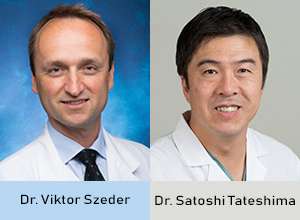
Dr. Viktor Szeder presented “Dural Arterio-Venous Fistula” in the Pseudo-live Cases session.
Dr. Satoshi Tateshima presented “New Neck Bridging Devices” in the Brain Aneurysm session.
SVIN 2018 Fellow Poster Presenters
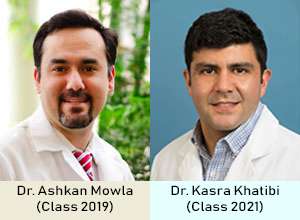
Dr. Ashkan Mowla presented“Intracranial Angioplasty and Stenting in the Treatment of Acute Ischemic Stroke; UCLA Experience." Dr. Kasra Khatibi presented “Effect of Intra-Arterial Verapamil Treatment on Brain Tissue Oxygenation in the Setting of Cerebral Vasospasm.”
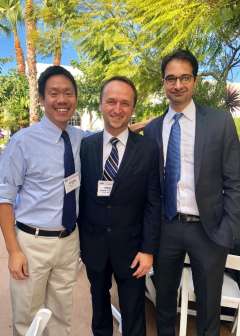
10 out of 96 (10%) of invited faculty presenters at the meeting were current UCLA faculty or graduates of our UCLA fellowship-training program.
Hope to have another successful meeting next year at the 12th Annual SVIN meeting in Atlanta, Nov 20-23, 2019.
UCLA at the Highest Level in Stroke Care Performance
The California Department of Public Health released a public report on the stroke care performance of all hospitals in the state. The latest public release analyzes performance in the 2014-2015 time period.
Both the UCLA-Ronald Reagan Medical Center’s Comprehensive Stroke Center and the UCLA-Santa Monica Hospital’s Primary Stroke Center performed at the highest level in this time period. This report provides information on the quality of ischemic stroke care at California acute care hospitals, and provides performance ratings for 267 hospitals on two outcome measures—risk-adjusted 30-day mortality and risk-adjusted 30-day hospital readmission. The outcome measures are statistically adjusted to account for differences in patient severity of illness at different hospitals, which allows for fair comparisons across all hospitals.
Of the 267 hospitals in the state, only 11 were rated as performing significantly “Better” in risk-adjusted mortality than the statewide average, and both UCLA-RRMC and UCLA-SMH are among these 11.
The physicians of the Division of Interventional Neuroradiology are essential team members of the stroke center and perform stroke interventions and treatment at both UCLA hospitals.
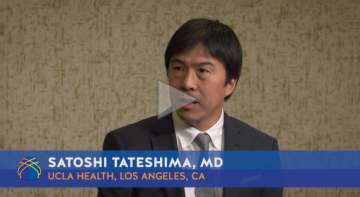
Interview with Dr. Satoshi Tateshima at WLNC 2017
Dr. Satoshi Tateshima and Dr. Gary Duckwiler participated in World Live Neurovascular Conference (WLNC) 2017 in Los Angeles as a faculty and also as a live clinical case demonstrator. UCLA Interventional Neuroradiology played a significant role in WLNC 2017 as the academic center in the hosting city. A lot of new neuro-interventional devices were demonstrated and used in the live cases broadcasted from Europe and South America. Dr. Tateshima shares his perspective what is in development in this field and what is coming in the near future.
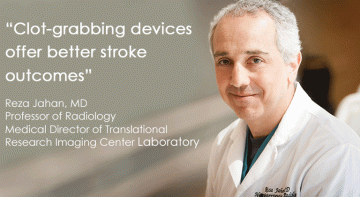
Follow-up Finds Clot-grabbing Devices Offer Better Stroke Outcomes
Reuters on April 5 featured Dr. Reza Jahan, a professor in the division of interventional neuroradiology, in a story about a study confirming that stroke patients recover better if doctors physically remove a clot from a blocked artery instead of only using the clot-busting drug tPA. Med Page Today on April 5 also covered the study, quoting Dr. David Liebeskind, associate director of the UCLA Stroke Program. The Reuters story also appeared in the Scientific American.
"How did the recent stroke trials change your daily practice?"
Dr. Gary Duckwiler answers the question at the WLNC 2016 - Neurovascular Exchange on May 27-29, 2016.
Physician of the Month
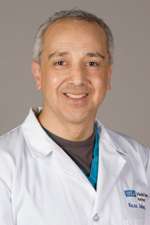
Dr. Reza Jahan -- April 2016 - Dr. Reza Jahan was selected as UCLA’s Radiology Physician of the month. He answers questions in this interview on his carrier at UCLA, interests as well as on the great results of the recent stroke treatment trial on which he was a lead author.
Dr. Jahan's Interview >
"How did the recent stroke trials change your daily practice?"
Dr. Gary Duckwiler answers the question at the the LINNC Seminar 2015 on March 27-28, 2015.
Swift Prime Stroke Study published!
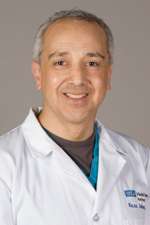
The latest news on acute endovascular stroke treatment is that now five studies (see below) have shown the benefit of removing the blood clot blocking a major brain blood vessel via a catheter inside the blood vessel (clot retrieval) in addition to intravenous clot busters. The previous standard therapy given within 4.5 hours after a stroke is called intravenous tPA.
In these recently published studies, patients either received this medication only, or had the tPA and had a catheter placed from the groin artery into the blocked brain artery and a device, called a stent retriever, was used to try and capture and remove the blood clot. All of the studies showed better outcomes and recovery in the patients who had both the tPA and clot retrieval.
UCLA participated in the most recent trial published SWIFT PRIME study. Dr. Reza Jahan from our Division of Interventional Neuroradiology was one of the lead authors of the study. In this study, 88% of the blocked blood vessels were successfully opened using the device and 60% of the patients who received the clot retrieval had independent functioning by 90 days after their stroke. It should be noted that this group of patients who have a major blood vessel blocked are at very high risk for death or nursing home care.
Stroke is time sensitive! You have to get to the hospital very quickly in order to have a chance of salvaging your brain. Recognize the symptoms of stroke.
Remember FAST! Face drooping, Arm weakness, Speech difficulty, and Time to call 911!
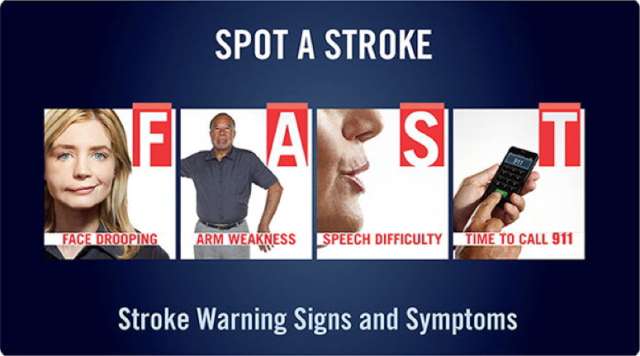
Recent Stroke treatment publications:
- MR CLEAN: N Engl J Med. 2015 Jan 1;372(1):11-20.
- ESCAPE: N Engl J Med. 2015 Feb 11.
- EXTEND IA: N Engl J Med. 2015 Feb 11.
- REVASCAT: N Engl J Med. 2015 Apr 17.
- SWIFT PRIME: N Engl J Med. 2015 Apr 17.
Stroke Center Innovators Buy Time, Save Brain

Dr. Gary Duckwiler -- Twenty years ago, most emergency room doctors considered stroke victims as candidates for rehabilitation, not treatment. And that’s if they survived. Ischemic stroke, or blocked blood flow that starves brain cells of oxygen, was untreatable. Hemorrhagic stroke, or bleeding that causes damaging or deadly pressure on the brain, was treatable only with invasive surgery. "The MERCI clot-retrieval device is not only the first device to obtain approval for use in acute stroke, it can be used beyond the three-hour limitation of rt-PA," says Gary Duckwiler, MD.
CBS The Doctors: "Strokes"
On April 20, the CBS show The Doctors featured Dr. Peter Lawrence, chief of vascular surgery, explaining a carotid artery ultrasound test to screen for stroke risk while UCLA technician Vicki Carter performed the noninvasive test on a volunteer. In addition, Dr. Reza Jahan, associate professor of interventional neuroradiology, demonstrated the MERCI Retriever, a device used to mechanically remove a clot from patients suffering an ischemic stroke.
KCAL9 News: "Docs Use Glue, That's Right, to Patch up Aneurysm"
KCAL-Channel 9 aired March 2, 2009 reports about a new liquid glue used to treat brain aneurysms too giant to be treated by conventional methods. The stories featured Dr. Satoshi Tateshima, assistant professor of interventional neuroradiology, who performed the Ronald Reagan UCLA Medical Centers first case on a patient with a strawberry-sized aneurysm.
NBC Nightly News
On November 28, 2008, NBC Nightly News featured UCLA’s Division of Interventional Neuroradiology’s Dr. Gary Duckwiler discussing new scans that target aneurysms. Full Story and Video >
The articles, actual cases treated by physician specialists in interventional neuroradiology at UCLA Medical Center, demonstrate that timely intervention can dramatically reduce brain damage from stroke and aneurysm. A stroke is an interruption of the blood supply to any part of the brain, in effect a brain attack. Brain cells die causing permanent damage, if blood flow is stopped for longer than a few seconds and the brain cannot get blood and oxygen. Other names for stroke are cerebrovascular disease; CVA; cerebral infarction and cerebral hemorrhage.
There are two types of stroke: Ischemic and hemorrhagic strokes. Ischemic stroke is when a blood vessel carrying blood to the brain is blocked by a blood clot; hemorrhagic stroke is when a blood vessel breaks open, causing blood to leak into the brain. An aneurysm is an abnormal widening or ballooning of a portion of an artery which is related to weakness in the wall of the blood vessel. If the aneurysm is not treated in time and ruptures, there is a 70% likelihood that the patient will either die or suffer a severe stroke that would prevent them from independent living.
Interventional neuroradiology is the treatment that avoids general anesthesia and allows brain monitoring during the procedure. The Clinical Neuroscience Program at UCLA has consistently been ranked in the top 10 in the nation. We hope that you find these articles, news announcements and illustrations helpful in better understanding stroke and aneurysm, along with descriptions of the procedures and treatments available in interventional neuroradiology at UCLA Medical Center.